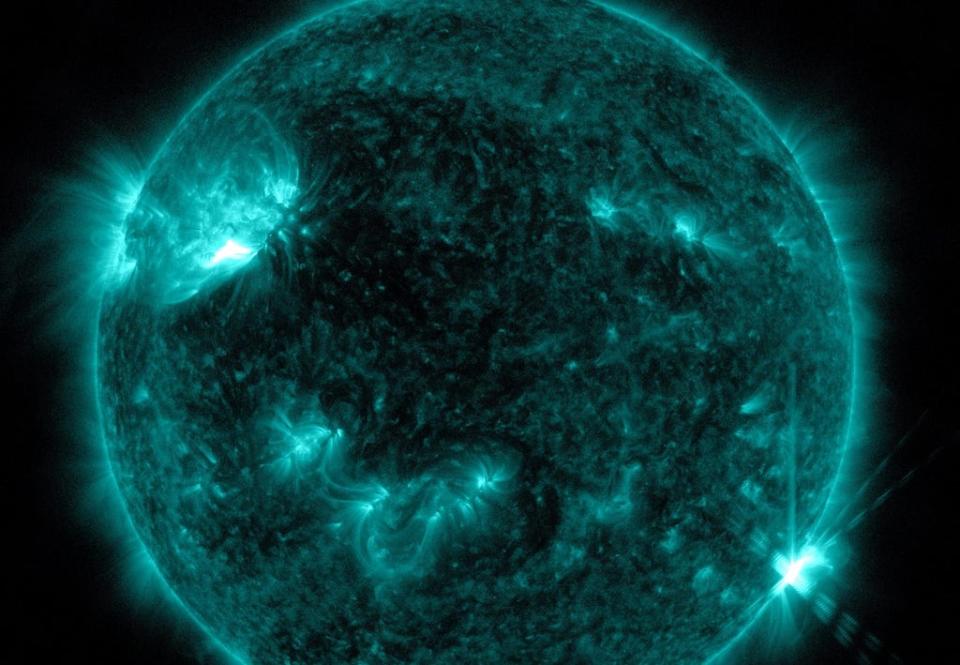Sun throws out strongest solar flare in years, prompting warning over possible future danger

The Sun has unleashed its most powerful solar flare seen in five years.
The latest dramatic eruption came amid an increasing amount of activity on our Sun, and warnings that it could lead to potentially dangerous solar weather.
The Sun appears to be moving into a particularly active period of its 11-year cycle of activity. That began in 2019, and is expected to peak in 2025.
Solar flares are powerful bursts of energy that come out of our star and can direct dangerous blasts towards the Earth.
This week’s record-breaking flare – the strongest in this solar cycle – did not do significant damage to Earth.
But scientists have warned that the Sun is moving into a more active period in its solar cycle, which could bring yet more energetic flares, some of which could point towards our planet.
Solar weather can cause damage to electrical grids, knock out satellites, harm astronauts and space equipment, and more. Scientists have routinely warned that the world is not prepared for the danger posed by more significant solar activity, especially given the vast amount of new satellites above Earth since the Sun’s most recent peak.
Nasa said it had actually spotted two solar flares on the evening of 19 April. The first was relatively moderate, but it was then followed by another strong one later in the evening.
There were some effects on Earth. There was a brief radio blackout for some communications in Asia.
But for the most part our planet avoided the full blast of the storm because it came out of the far edge of the Sun, and so missed Earth.
The second was an X-class flare, the most intense possible flare. It was the most intense to be spotted since 2017.
As well as marking flares with a letter, scientists also give them a number: the latest was classified as X2.2. Higher numbers mean more intense flares – and the strongest ever seen was in 2003, which reached more than X28.

 Yahoo Finance
Yahoo Finance 